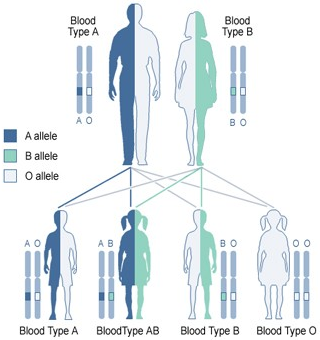Early transfusions were risky and many resulted in the death of the patient. It was not until 1901 — when the Austrian Karl Landsteiner discovered human blood groups — that blood transfusions became safer. Mixing blood from two incompatible individuals can lead to an immune response, and the destruction of red blood cells releases free hemoglobin into the bloodstream, which can have fatal consequences. Karl Landsteiner discovered that when incompatible types are mixed, the red blood cells clump, and that this immunological reaction occurs when the receiver of a blood transfusion has antibodies against the donor blood cells. His work made it possible to determine blood types and allowed a way for blood transfusions to be carried out much more safely. For this discovery he was awarded the Nobel Prize in Physiology and Medicine in 1930, and many other blood types have been discovered since.

Every person's blood has 2 markers called ABO alleles. Each of the markers is represented by one of three letters: A, B or O. The A allele gives blood type antigen A, the B allele gives blood type antigen B and the O allele is a recessive allele that does not give a blood type antigen. This gives six possible combinations of these alleles that a person can have, each of them resulting in a particular ABO blood type for that person as shown in the table below.
| combination | ABO blood type |
|---|---|
| A and A | A |
| A and B | AB |
| A and O | A |
| B and B | B |
| B and O | B |
| O and O | O |
Input
A combination of two ABO alleles (represented by the letters A, B and O), on two separate lines.
Output
The ABO blood type that corresponds to the combination of alleles from the input. The following template should be used to format the output: "The combination of the ABO alleles A and B results in blood type AB.". The fragments in italics of this template should be filled with the data from the input. Please note that this sentence starts with a capital, ends in a full stop, and that there is no space between the blood type and the full stop. Output that deviates from this template will be considered as a wrong answer.
Example
Input:
A
BOutput:
The combination of the ABO alleles A and B results in blood type AB.Example
Input:
B
AOutput:
The combination of the ABO alleles B and A results in blood type AB.